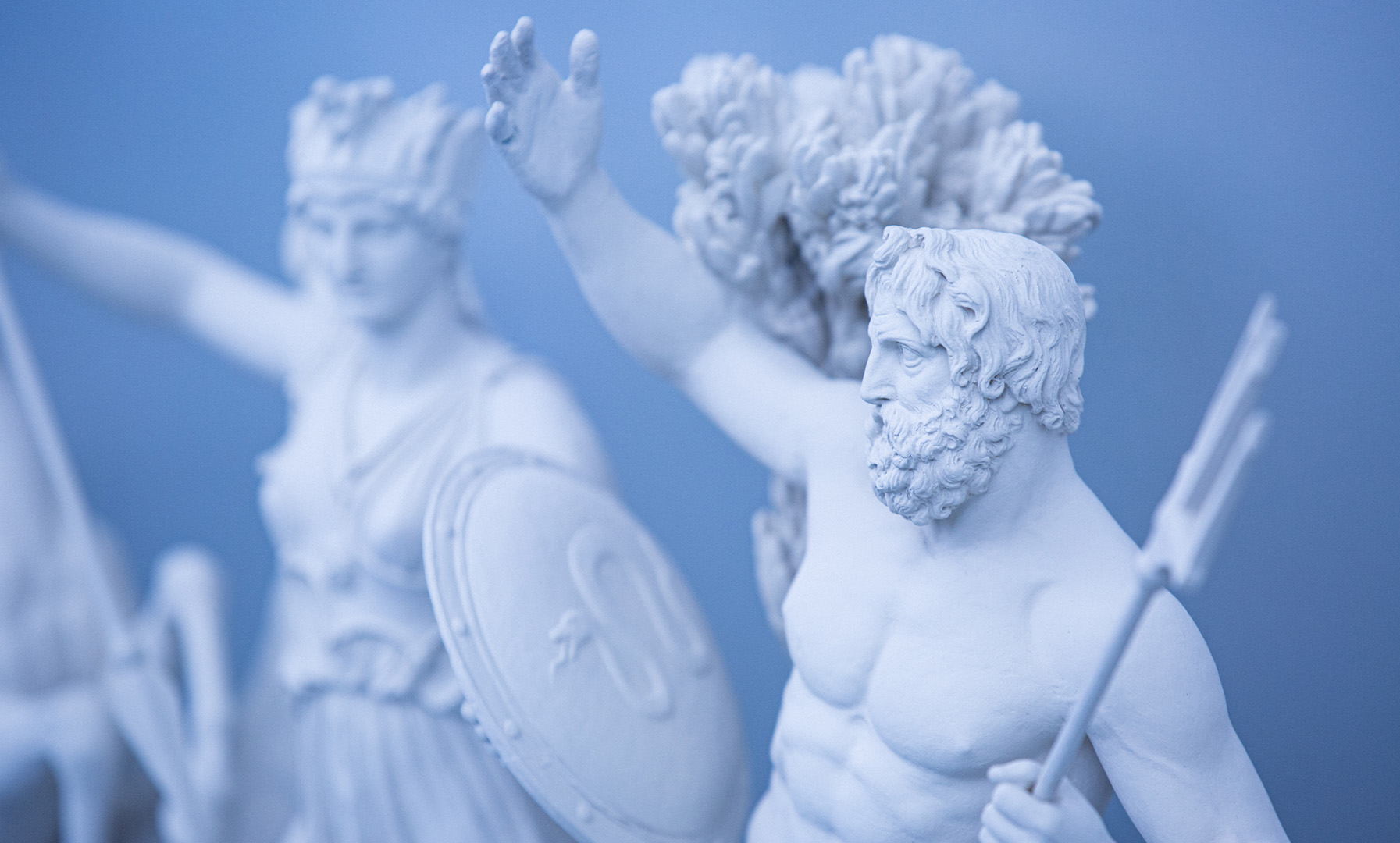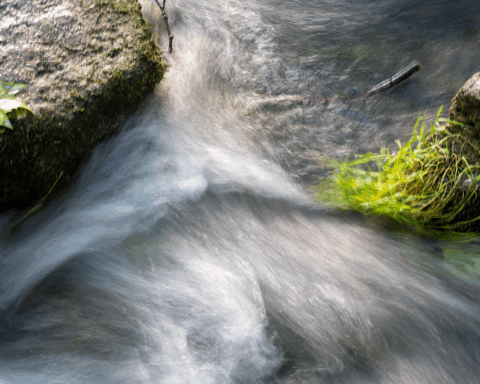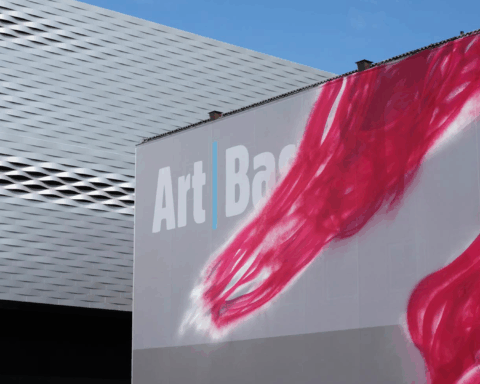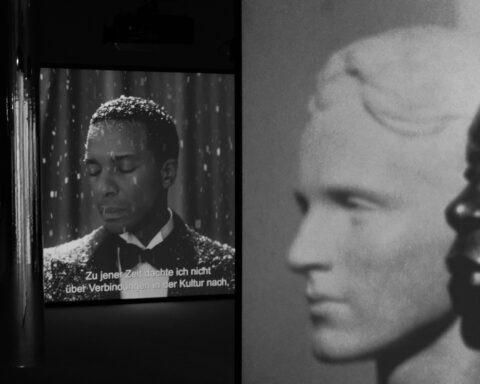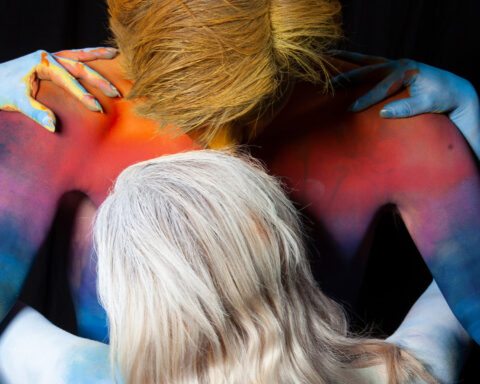In Wuppertal geboren und aufgewachsen entdeckt Evangelos Rodoulis seine Liebe zur Fotografie während er neben dem Wirtschaftsstudium als Model arbeitet. Heute finden sich seine Aufnahmen in einigen der größten internationalen Zeitungen und Magazinen. Er experimentiert mit unkonventionellen Ansätzen, unterschiedlichen Fototechniken und ist bekannt für seinen einzigartigen Einsatz von Licht. Seine Fotografien bewegen sich zwischen Traum und Wirklichkeit, Zeitgeschehen und Historie und tragen stets seine einzigartige Handschrift.
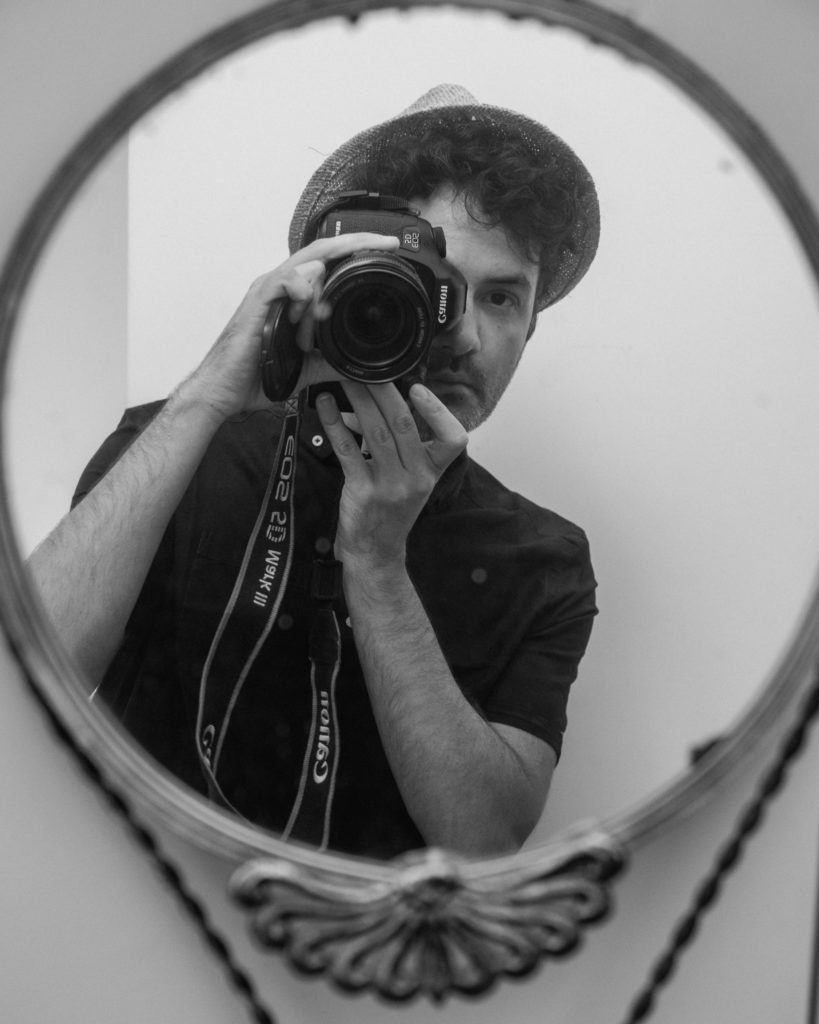
In unserem Interview spricht Evangelos von Menschen und Ereignissen, die seine Fotografie beeinflussen. Er erzählt von seiner engen Verbundenheit zur griechischen Mythologie, seinen aktuellen Experimenten mit dem Einsatz künstlicher Intelligenz zur Kreation von Bildern und dem Potenzial, das er in der neuen Technik sieht.
Lieber Evangelos, vielen Dank, dass Du Dir die Zeit nimmst, um mit mir über Fotografie zu sprechen. Lass uns mit Deiner Geschichte beginnen.Warum bist Du Fotograf geworden?
Eigentlich aus der Not heraus. Ich wollte Fotografie ursprünglich nicht zum Beruf machen, weil es mir schon immer wichtig war, frei bestimmen zu können, was und wie ich fotografiere. Als ich nach dem Studium aber einen Job brauchte und bereits verschiedene Veröffentlichungen als Fotograf hatte, habe mich dann doch selbstständig gemacht. Aus familiären Gründen wollte ich damals nicht aus Wuppertal weg, deswegen war diese Gelegenheit ein echtes Geschenk. Ich bin sehr dankbar, bis heute mit meiner Kunst Geld verdienen zu dürfen.
Trotzdem arbeitest Du seit 2021 auch wieder festangestellt.
Genau – tatsächlich war ich noch nie so lange irgendwo fest angestellt. Es ist schön für eine Bildungseinrichtung zu arbeiten, da es um eines der wichtigsten Güter unserer Gesellschaft geht. Themen wie Nachhaltigkeit, Bildung und Erinnerungskultur sind mir sehr wichtig und das alles kann ich in meinem aktuellen Job vereinen. Es kommt mir manchmal vor wie ein Hobby, bei dem ich dafür bezahlt werde, Gutes zu tun.
Vor allem das Thema Erinnerungskultur nimmt in meiner Arbeit viel Raum ein. Damit wir als Gesellschaft aus Fehlern lernen, halte ich es für sehr wichtig, dass wir uns mit der Vergangenheit beschäftigen. Leider habe ich das Gefühl, dass viele die Vergangenheit nicht mehr interessiert. Man sieht, dass Geschichte sich ständig wiederholt – deshalb ist es wichtig, nachfolgende Generationen an das zu erinnern, was einmal geschehen ist. Mit dem Verschwinden von Zeitzeugen geht nicht nur Wissen verloren, sondern auch eine ganze Generation von Geschichten. Viele junge Menschen wissen gar nicht mehr, was Stoplersteine oder Gedenktafeln sind. Deshalb versuche ich, die Thematik regelmäßig in den Fokus der Öffentlichkeit zu rücken und Aufmerksamkeit zu erzeugen.
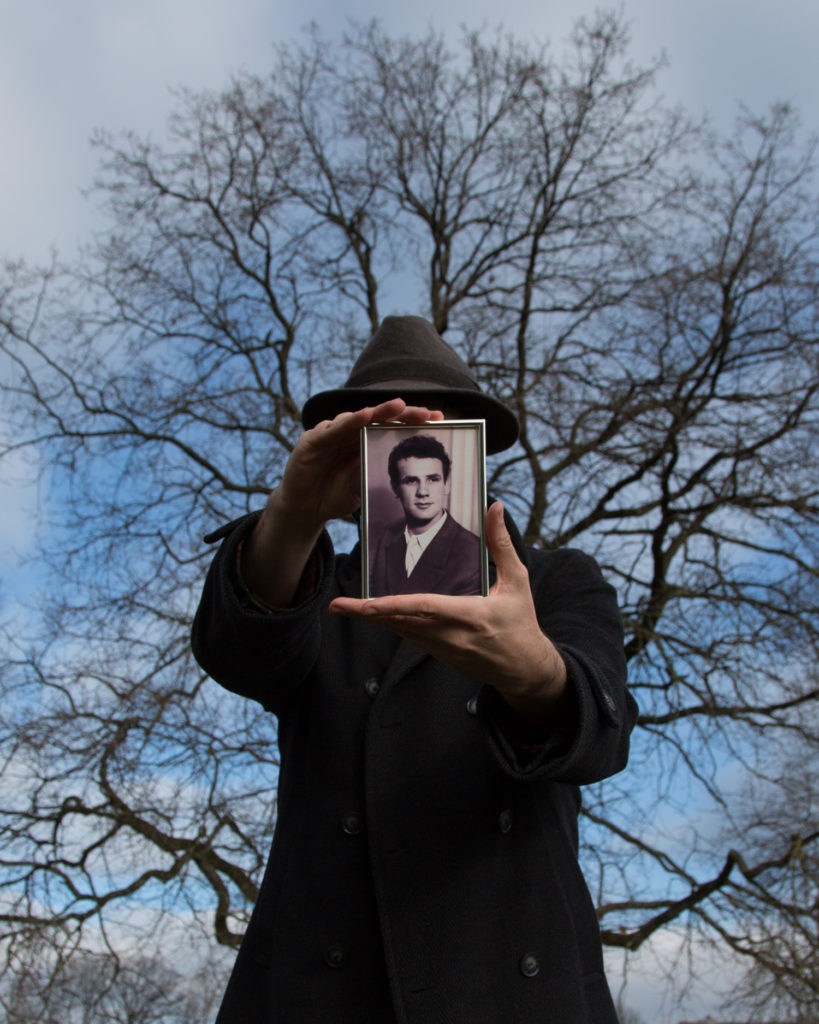
Memories
Evangelos Rodoulis
Memories
Evangelos Rodoulis
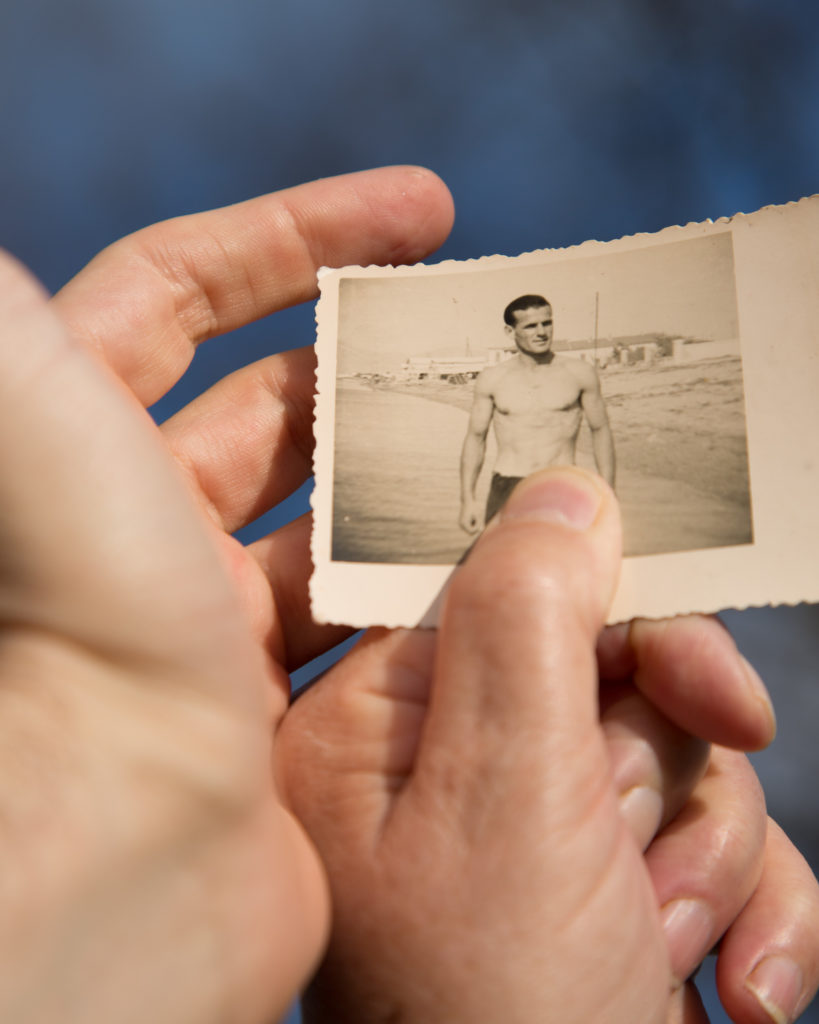
Von Vergangenheit handeln auch viele Deiner Bilder. Für mich haben sie oft etwas melancholisches, fast trauriges. Würdest Du das auch so sehen?
Wenn ich fotografiere ist mir das gar nicht so sehr bewusst. Erst im Nachhinein sehe ich dann manchmal, dass meine Bilder eine gewisse Traurigkeit oder Wehmut haben. Gerade die Bilder, die ich am liebsten mag, handeln tatsächlich von Vergänglichkeit und Erinnerung, Freundschaft oder Verbundenheit. Vielleicht ist das Fotografieren da wie eine Art Therapie. (lacht)
Gibt es einen besonders spannendsten Menschen, den Du immer wieder fotografierst?
2017 hatte ich ein Shooting in London und das Model ist spontan krank geworden. Dort habe ich Cali White kennengelernt. Cali ist ein sehr spannender Mensch, kommt wie ich aus Griechenland und hat so viele Facetten, dass man sie niemals alle auf einem Bild erfassen könnte. Neben ihrer Arbeit als Model setzt sie sich für viele wohltätige Projekte ein und hat super viele eigene Ideen und Visionen, die immer Teil unserer gemeinsamen Arbeiten werden. Mit ihr ist jeder Shootingtag besonders – man weiß einfach nie, was passiert. Mittlerweile sind wir sehr gut befreundet und sehen uns immer mal wieder irgendwo auf der Welt.
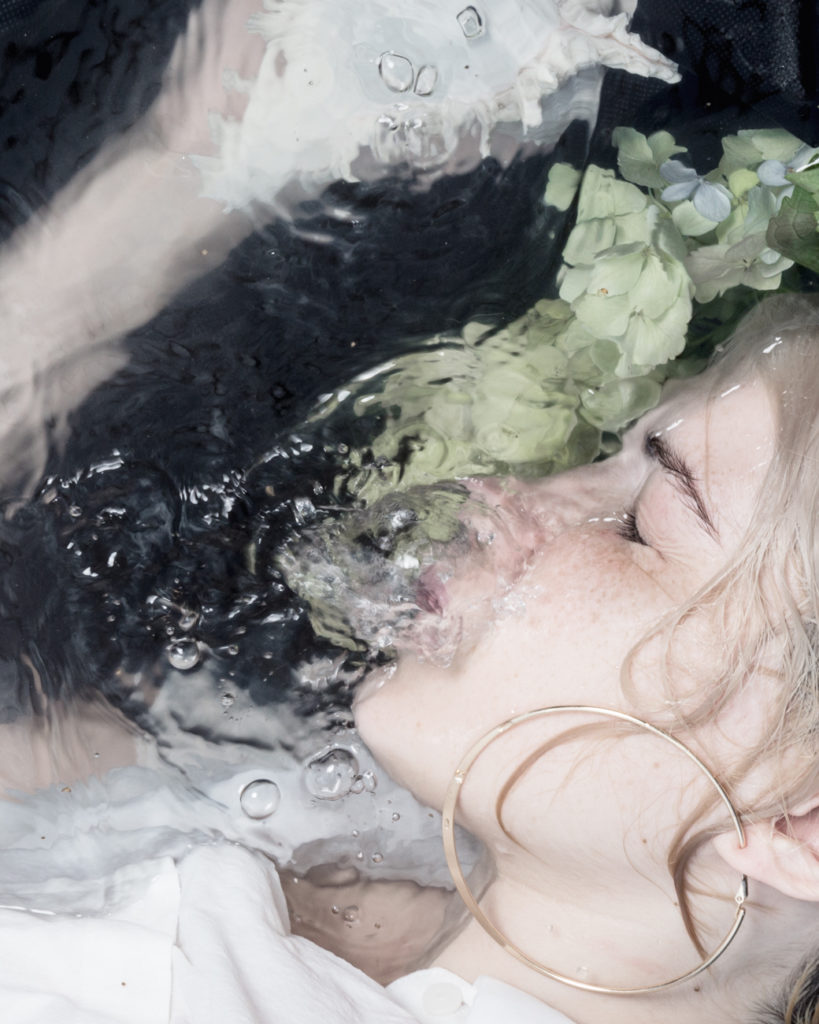
Was würdest Du in der Modefotografie gerne mehr sehen?
Ich finde es aktuell unglaublich spannend zu sehen, wie sich die Modewelt verändert. Franca Sozzani nimmt für mich hier eine ganz zentrale Rolle ein. Sie war lange Chefredakteurin der Vogue Italia und sowohl sie als Person als auch ihre Arbeit sind in meinen Augen zeitlos und immer wieder inspirierend. Sie sagte einmal: “Fashion is a mirror of the era in which we live. Why should the magazine be disconnected from reality? It’s not like in the past.“
Was mir aktuell überhaupt nicht gefällt ist der anhaltende Schönheitswahn auf Social-Media und in der Gesellschaft. Ich finde es wichtig und richtig, in der Fotografie darauf hinzuweisen und gleichzeitig realitätsnäher zu werden, um keine falschen Ideale zu vermitteln. Ein Schlüsselbegriff ist für mich hier Authenizität.
Es wäre schön, mehr dokumentarische Ansätze in der Modefotografie zu sehen, ohne starke Bildbearbeitung oder falsche Schönheitsbilder zu bestärken. Besonders inspirierend finde ich die Instagram Auftritte von Sofia Lucas (@sofia.s.lucas) und Alessia Glaviano (@alessiaglaviano). Die beiden mischen dokumentarische und abstrakt künstlerische Bilder in ihren Feeds, die man sonst nur in ausgewählten Mode und Kunstmagazinen findet. Dabei gehen sie auf politisch relevante, sehr gegenwärtige Themen ein und setzen sie über Mode in unterschiedliche Kontexte. Anders als viele Redakteur*innen der Szene arbeiten sie mit realen Charakteren und zeigen neben Moden auch viel Kunst, Landschaft und Stilleben. Eine meiner Lieblingsstrecken „Phantasos„, bestehend aus künstlerischen Stillleben ist mir selbst sehr wichtig und wurde dank Sofia Lucas publiziert.
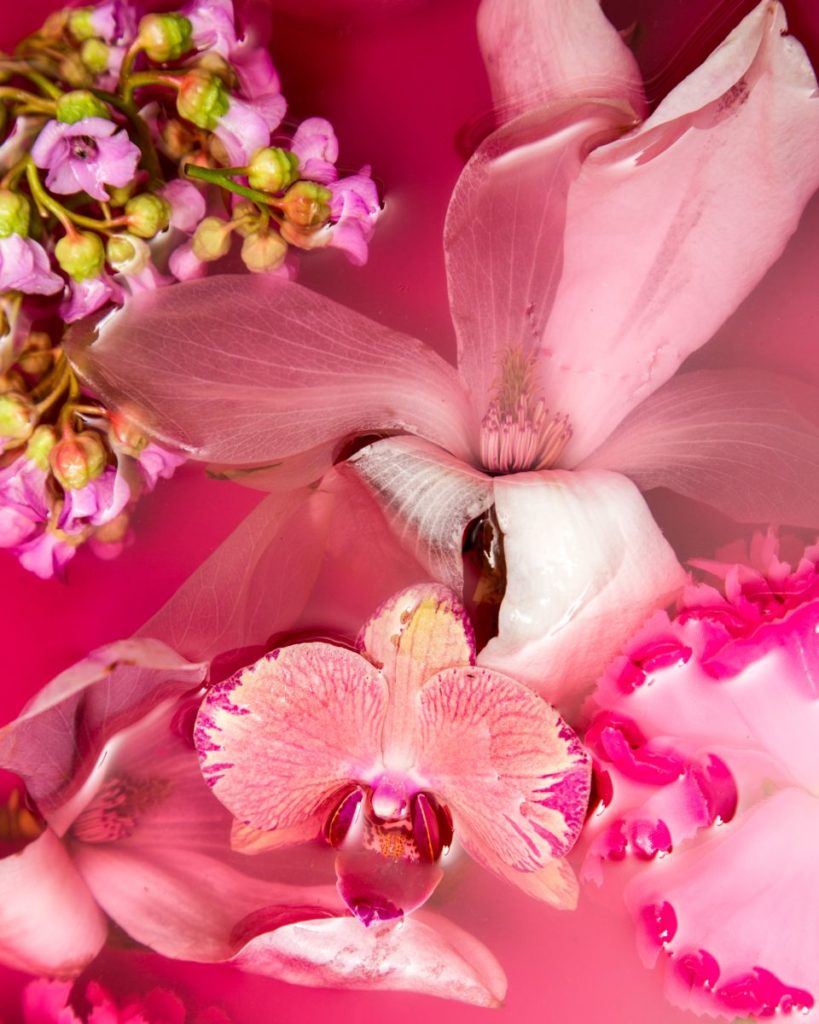
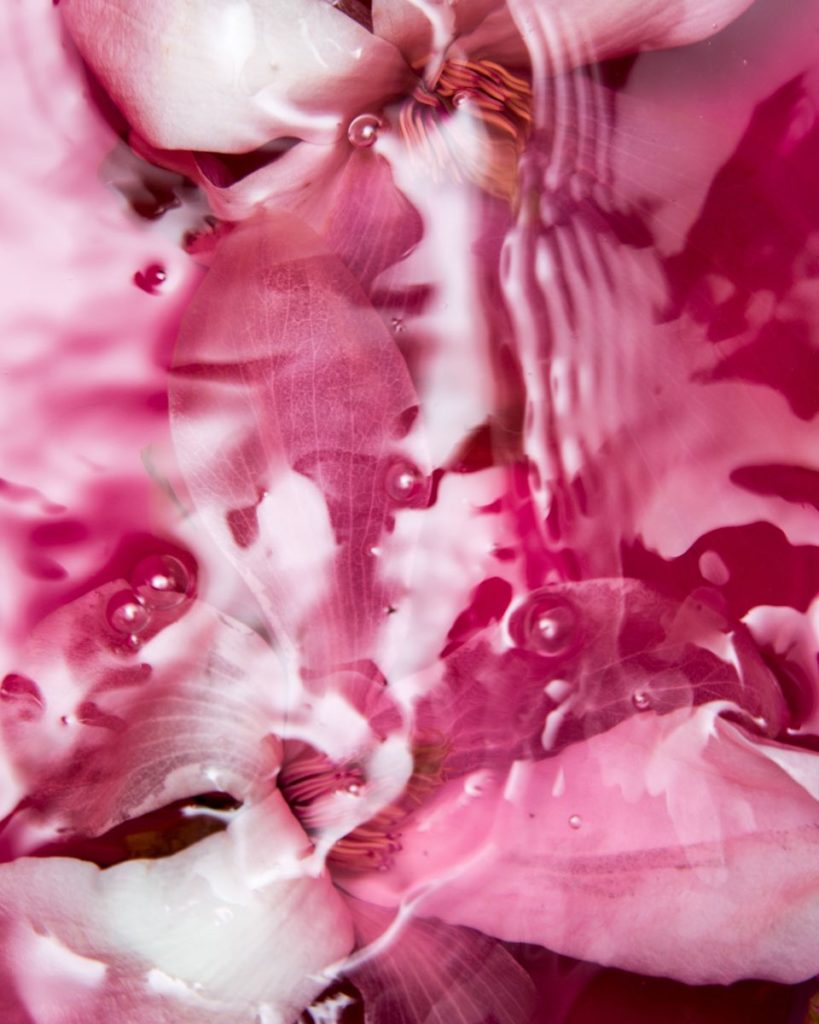
Auch Deine Arbeiten haben häufig dokumentarischen Charakter. Was war der ungewöhnlichste Ort den Du jemals fotografiert hast?
Spontan würde ich sagen die Agia Theodora. Das ist eine heilige Pilgerstätte in Griechenland, eine kleine Kapelle, die mitten im Nichts liegt, und aus der 17 große Bäume heraus wachsen. Der Ort hat etwas sehr mystisches und die Atmosphäre ist wirklich besonders. Dort findet man nichts außer Quellen, Bächen, Bäumen und gelegentlich ein paar Pilgern. Die heilige Theodora, der die Kapelle gewidmet ist, hatte eine ähnliche Geschichte wie Jeanne D’Arc. Theodora ging als Mann verkleidet zum Militär, um das Überleben ihrer Familie zu sichern.
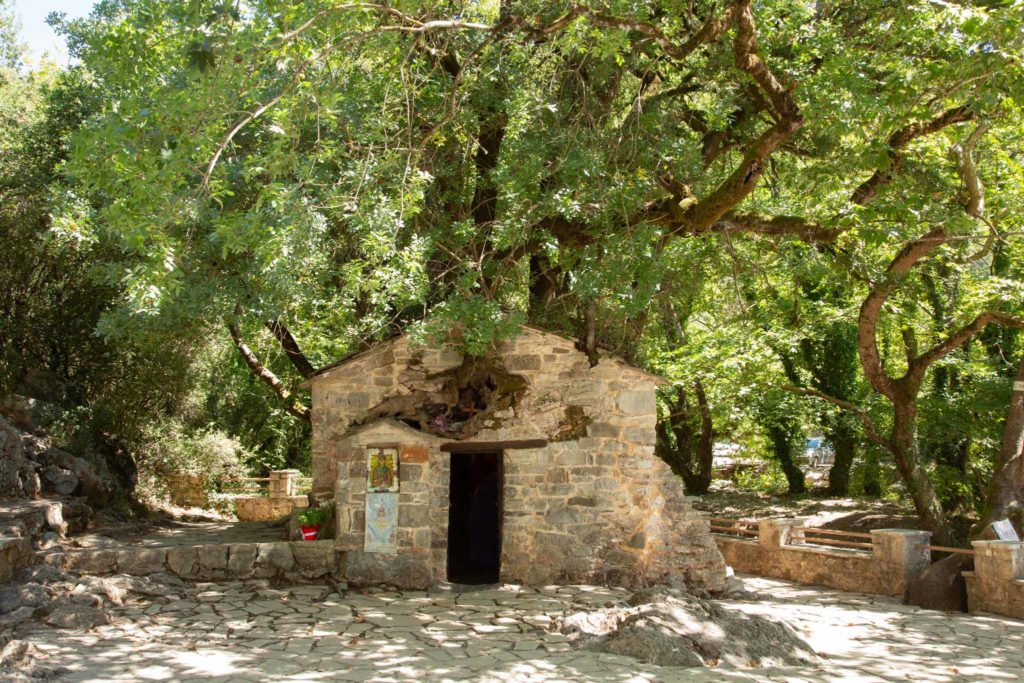
Unwissend über das Versteckspiel, verliebte sich eine Frau in Theodora, die sie natürlich zurückwies. Gekränkt beschuldigte die verliebte Frau sie anschließend, sich an ihr vergangen zu haben. Theodora wurde daraufhin zum Tode verurteilt und äußerte kurz vor ihrer Hinrichtung im Gebet den Wunsch, ihr Grab möge zu einer Kirche werden, ihr Blut zu einer Quelle und ihr Haar zu Bäumen. Als sich nach ihrem Tod herausstellte, dass sie kein Mann und damit unschuldig war, wurde Theodora heilig gesprochen. Viele Deiner Bilder sind von Mythen, Sagen und Geschichten wie der von Theodora inspiriert. Was fasziniert Dich daran? Alles! Ich bin mit Mythen groß geworden und verbinde die Geschichten mit meine Kindheit, weil sie mir damals zum Einschlafen erzählt wurden. In Griechenland ist die Mythologie im Alltag noch immer allgegenwärtig. Deshalb ist es für mich jedes Mal sehr inspirierend, dort durch die Straßen und Museen zu ziehen.
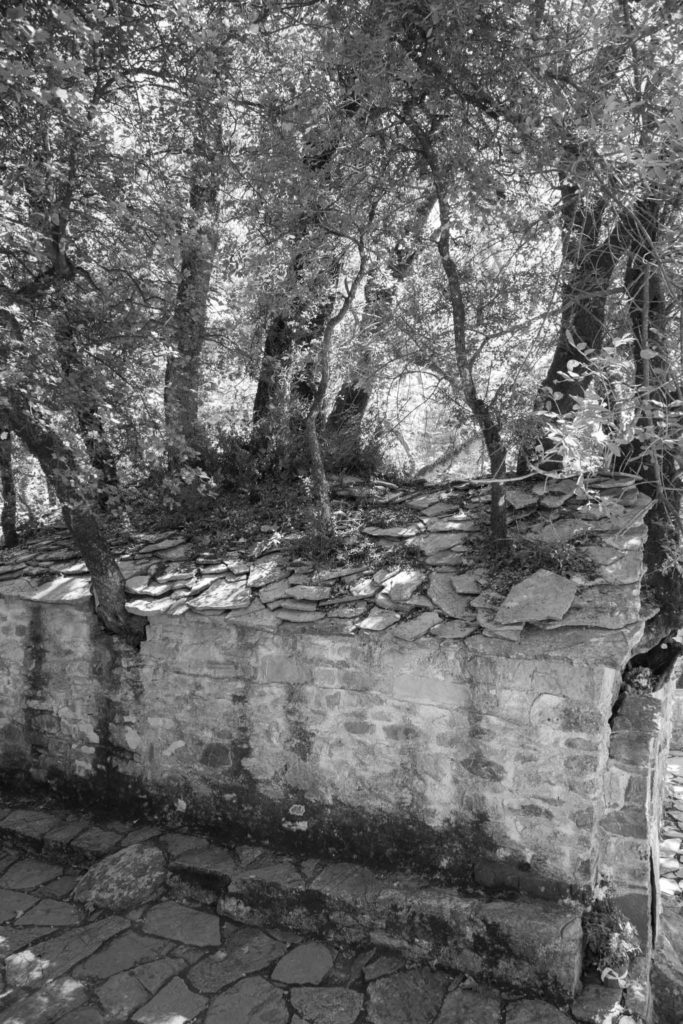
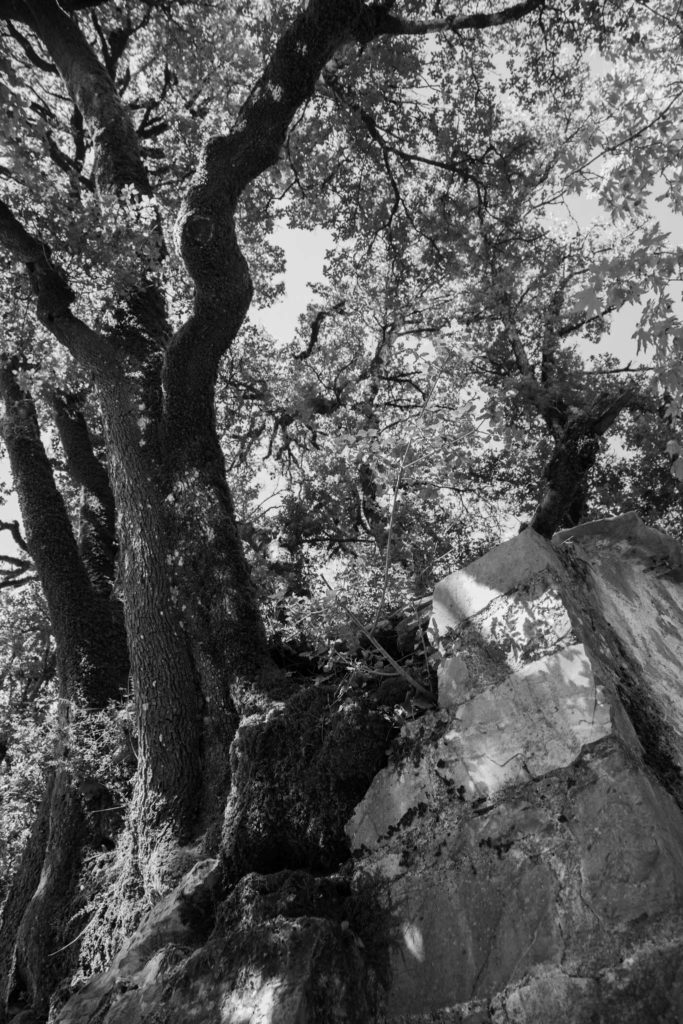
Genauso faszinieren mich Sagen und Märchen – ich liebe die Idee, dass alles möglich ist. In Mythen mag ich vor allem das immer wiederkehrende Element der Metamorphose. So heißt es beispielsweise, das Zeus sich in einen Stier verwandelt, um Europa zu entführen. Oder Phantasos, der Sohn von Hypnos, dem Gott des Schlafes, sich in den Träumen der Menschen in alles verwandeln kann, was keine Seele hat. Zu ihm habe ich schon ganze Strecken fotografiert.
Mit welchem griechischen Gott würdest Du gerne Zeit verbringen?
Eigentlich faszinieren mich alle, aber ich glaube ich würde Zeus nehmen, schließlich ist er der Vater, der alle Götter erschaffen hat. Ich würde ihn zu allen zwölf olympischen Göttern ausfragen und von ihm wissen wollen, was er am Menschen besonders mag. Auch seine Tochter Athena, die Schutzgöttin der Stadt Athen, hat eine tolle Geschichte. Sie steht für Weisheit und Gerechtigkeit. Um zu entscheiden, ob Athena oder Poseidon die Stadt Athen zugesprochen werden würde, mussten beide der Stadt ein Geschenk machen. Siegerin wurde, wessen Geschenk die Götter für das wertvollste hielten. Poseidon stieß seinen Dreizack auf der Akropolis in den Felsen und Wasser sprang aus dem Boden. Athena stampfte mit dem Fuß auf und der erste Ölbaum der Welt wuchs aus der Erde. Die Götter erklärten Athena zur Siegerin, die Stadt bekam ihren Namen und stand fortan unter ihrem Schutz. Der heilige Baum ist seither ein uraltes Symbol für Frieden.
Was können wir heute von der griechischen Mythologie lernen?
Die Mythologie ist für mich eine niemals endende Quelle der Inspiration. Die Geschichten von damals haben heute noch immer einen Wert. Das sehen wir ja auch anhand der vielen Verfilmungen und Theorien, die es zu ihnen gibt. Das Mysteriöse bleibt bis heute erhalten, da viele Gottheiten noch gar nicht so viel erforscht sind, wie man denkt. Mir gefallen auch die Begriffe und Symbole rund um die Götterwelt – Zeus, der Herrscher des Himmels – das ist ein wunderschönes Wortbild. Oder sein Herrscherblitz als Machtsymbol.
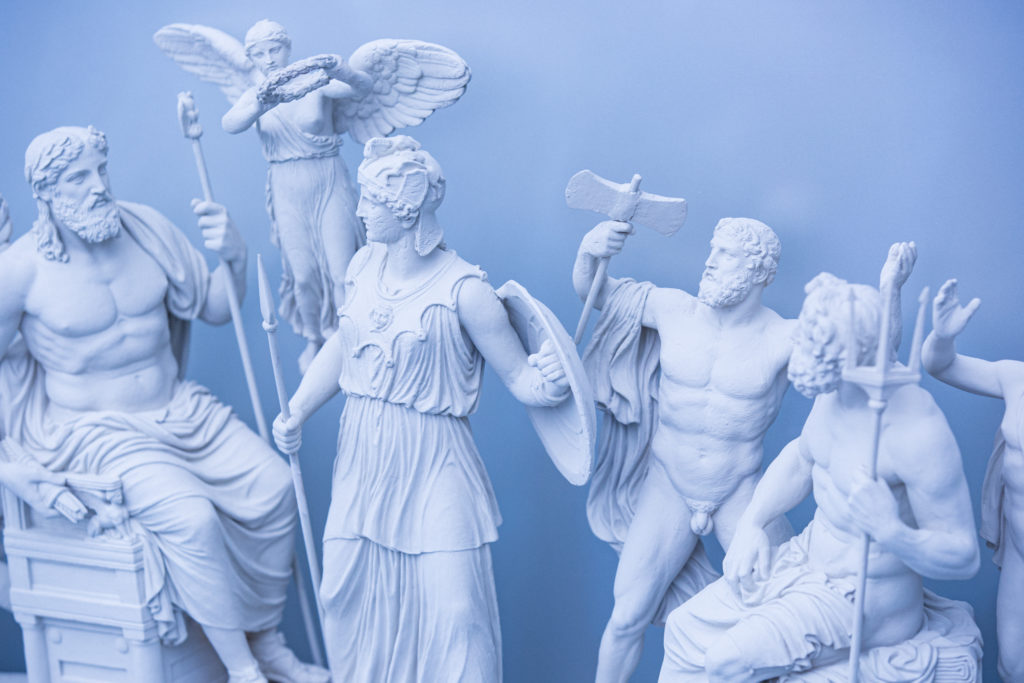
Seit kurzem hast Du neben der Fotografie auch das Thema KI für Dich entdeckt. Wie bist Du angefangen sie in Deine Arbeiten einzubauen?
Eigentlich so wie wahrscheinlich alle: indem ich es einfach mal ausprobiert habe. In den Medien wird viel davon gesprochen, dass KI eine Bedrohung sei und alle Fotografinnen nun arbeitslos würden, aber solche Nachrichten erschrecken mich nicht. Ich finde es immer spannend, mir neue Technologien genauer anzusehen und schaue einfach, was ich von ihnen lernen und mit ihnen gestalten kann.
Und wie lange hat es gedauert bis das erste Bild entstanden ist, mit dem Du zufrieden warst?
Gar nicht so lange. Ich glaube es waren zwei Stunden bis ich das erste Ergebnis hatte, das mir gefiel. Natürlich bearbeite ich die Bilder im Nachhinein immer noch weiter. Ich nehme das Ausgangsbild, korrigiere Elemente, die für mich nicht passend aussehen und gebe ihm gleichzeitig noch ein paar Ecken und Kanten, damit es nicht zu perfekt aussieht. Es wir wirklich ein spannender Prozess, denn natürlich entstehen Bilder, die ich in dieser Form nie hätte fotografieren können. Wie ist es für Dich, dass die Menschen auf den Bildern nicht existieren? Gruselig, aber irgendwie auch cool. Ich sehe vor allem die Besonderheit, dass ich in der Nachbearbeitung auf eine Weise in das Bild eingreifen kann, wie ich es bei einer Fotografie niemals machen würde. Bei einem Model würde ich beispielsweise viel weniger nachbearbeiten, weil ich das Gefühl hätte, eine Identität zu verändern.
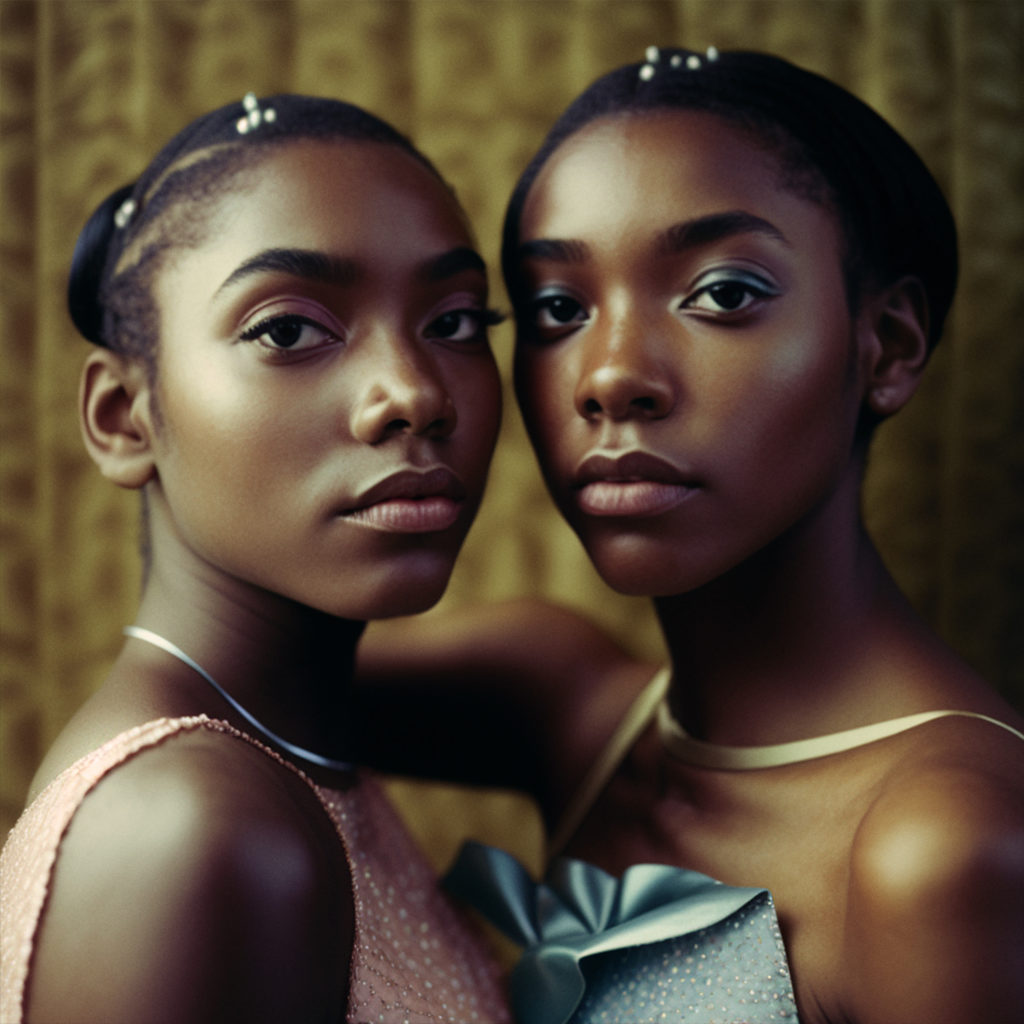
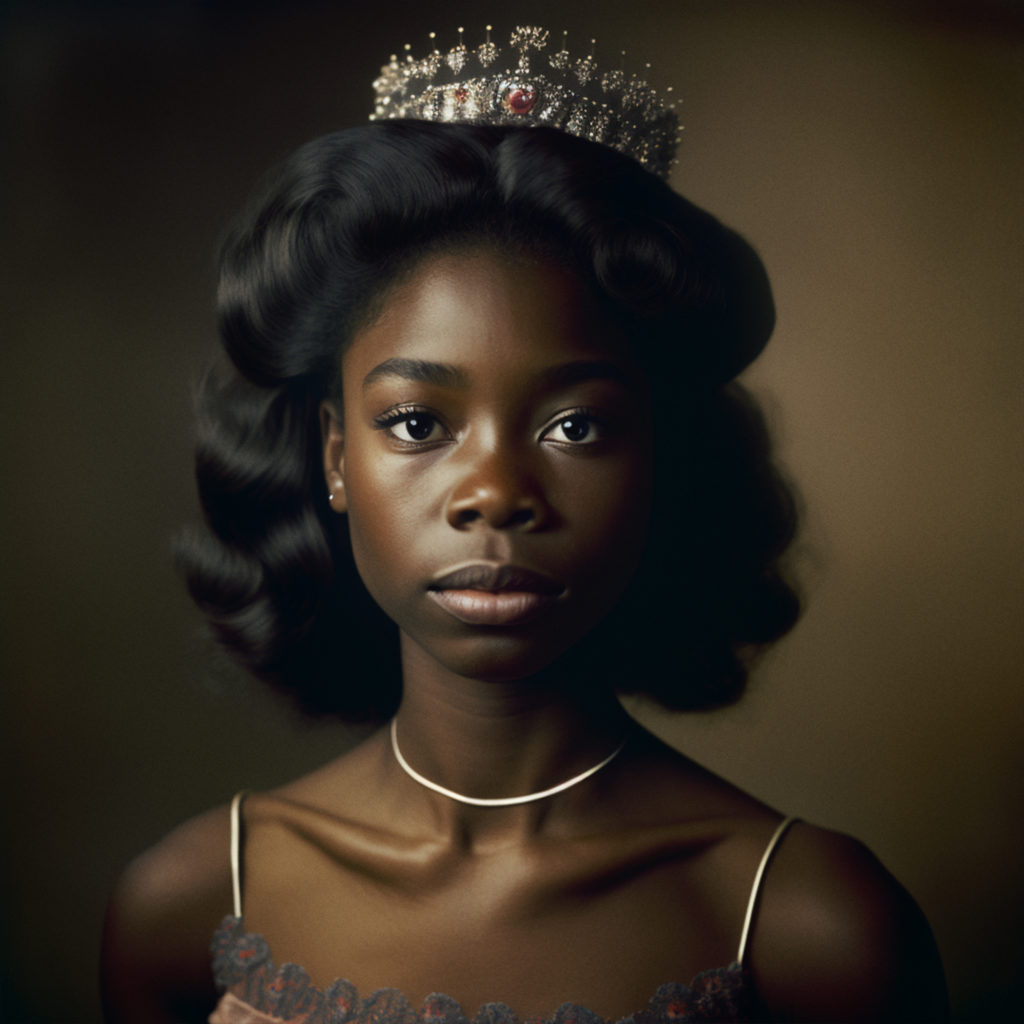
Das heißt, Du bist viel freier im Experimentieren mit den Bildern?
Absolut! Weil ich weiß, dass ich niemanden damit verletze und keine Rücksicht auf Eitelkeiten nehmen muss. Das ist auf jeden Fall ein Vorteil. Würdest Du die Bilder dann überhaupt noch als Fotografie bezeichnen? Nein. Für mich sind sie einfach Kunst. Wie schaffst Du es, auch bei den KI-Bildern Deinen persönlichen Stil nicht zu verlieren? Ich glaube das ist eine Mischung aus verschiedenen Vorgehensweisen. Oft lasse ich die KI beispielsweise den Stil ganz bestimmter Kameramodelle nachahmen, die ich auch beim Fotografieren selbst verwende. Dann nutze ich manchmal meine eigenen Aufnahmen als Grundlage für die generierten Bilder und zuletzt bearbeite ich ja alle Bilder nach, bis sie so aussehen, dass sie mir gefallen. Auf diese Weise ist es für mich eine echte Zusammenarbeit zwischen künstlicher Intelligenz und mir. Ich warte allerdings nur auf den Tag, wo ich mich selbst verschlagworte und generierte Bilder dabei herauskommen, die von Anfang an so aussehen, als wären sie von mir. Das wäre wahrscheinlich gruselig. Aber ich würde auch das irgendwie spannend finden. Also siehst Du keine Konkurrenz, sondern Potenzial in der neuen Technik? Total. Und wie stehst Du zu der Gefahr, dass langfristig durch die KI-Systeme Aufträge wegfallen? Ob das wirklich passieren wird, kann ich gar nicht sagen. Ich glaube, dass sich etwas verändern wird und dass wir uns als Fotografinnen anpassen müssen. Aber das hat man in allen Branchen – gerade durch künstliche Intelligenz.
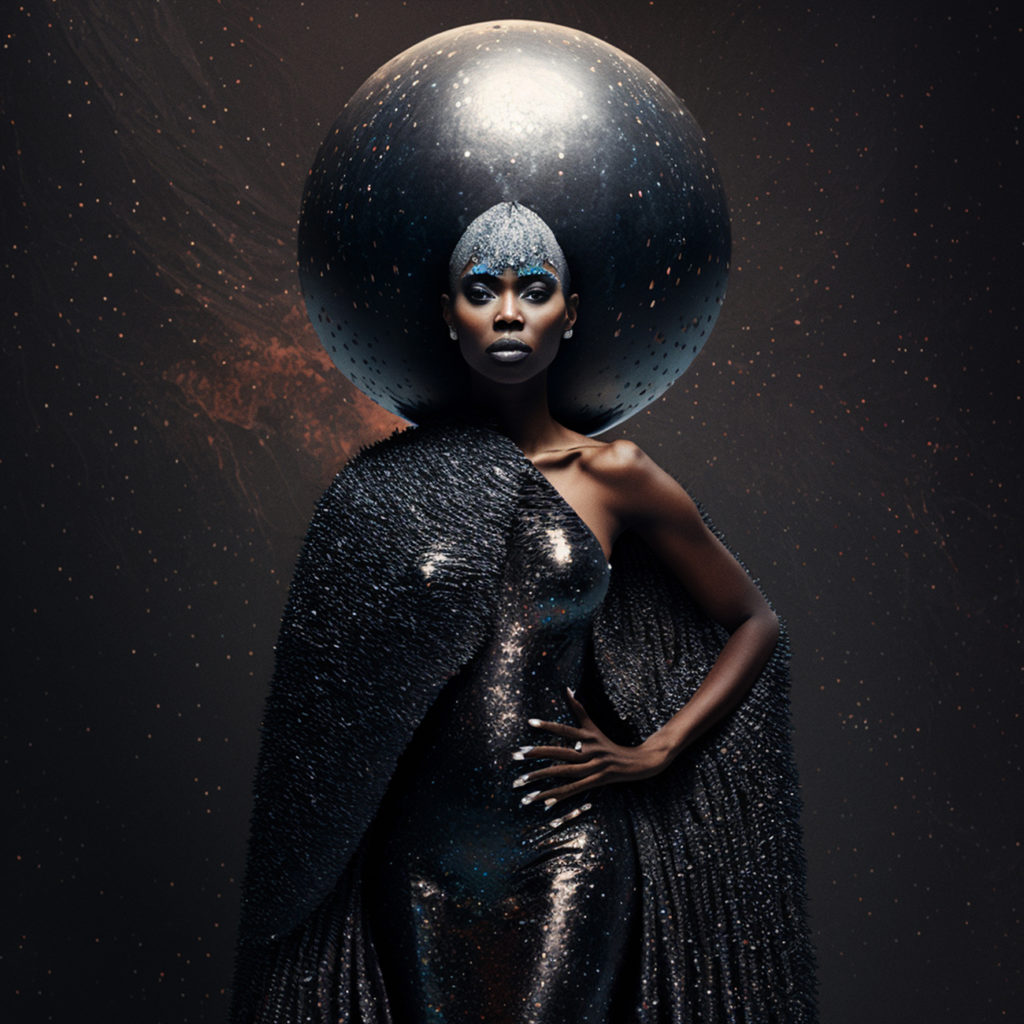
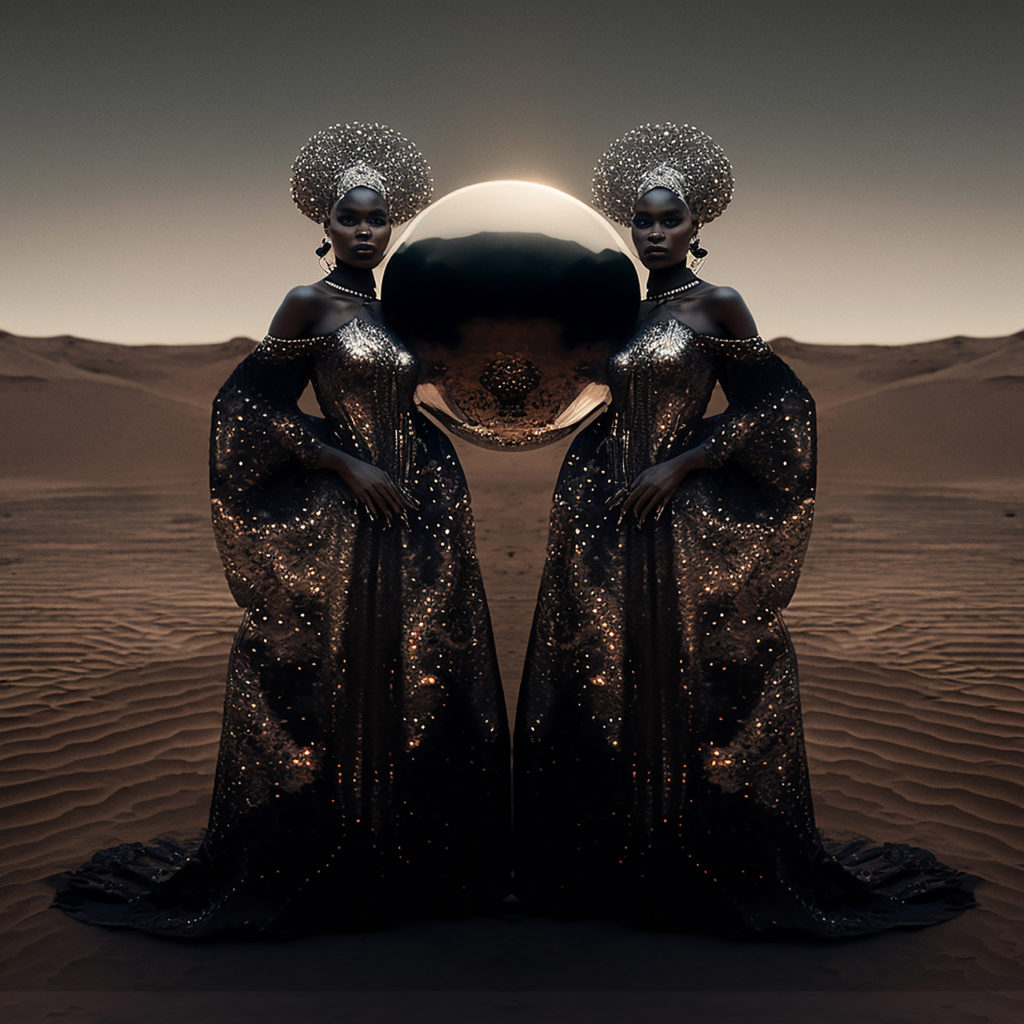
Welche Auswirkungen siehst Du für Models?
Ich glaube schon, dass man als Model weiterhin gebucht wird, wenn man sich einen Namen macht – mittlerweile sind die großen Models ja ohnehin eigene Brands. Für die ist es bestimmt keine Gefahr. Rechtlich wäre es ja beispielsweise auch nicht möglich, sich einfach das Gesicht von Naomi Campbell generieren zu lassen.
Wie sieht es mit anderen Künstlerinnen aus? Hast Du Beispiele von Fotografinnen, die ebenfalls besonders oder einzigartig mit KI arbeiten?
Ich denke da direkt an Alina Gross. Ihre Fotografien haben einen ganz eigenen Stil und einen unglaublichen Wiedererkennungswert und sie schafft es ganz eindrucksvoll, dass genau das auch ihre KI-generierten Bilder auszeichnet.
Glaubst Du, dass sich langfristig durch den Einsatz von KI etwas in der fotografischen Ästhetik verändern wird? Beispielsweise im Bereich Bildsprache, Bildwelt etc.?
Die fotografische Ästhetik ändert sich sowieso kontinuierlich. Mal sind Bilder gefragt, die fast kaputt retouchiert sind und Null Authentizität haben, dann sollen sie möglichst analog aussehen und kurz danach dokumentarisch. Aber ändert sich genauso wie die Mode und da sehe ich keinen Unterschied durch die KI. Die größere Frage sehe ich eher im Bereich der Urheberrechte – die liegen zwar mit bei den jeweiligen Künstler*innen, die verschlagworten, aber die KI kann die Bilder ja auch selbst weiter nutzen.
Und in der Arbeit mit Magazinen – meinst Du hier ändert sich etwas?
Zuerst hätte ich das nicht gedacht, aber nachdem ich schon einige Strecken zum Thema künstliche Intelligenz publiziert habe, sehe ich das etwas anders. Die neue Technik macht es natürlich viel einfacher, neue Strecken zu ‚shooten‘ und da Magazine sich sowieso mit immer weiter schrumpfenden Budgets konfrontiert sehen, kann KI tatsächlich eine Alternative sein. Bis es soweit ist, dauert es aber sicher noch eine Weile.
Danke für dieses spannende Gespräch lieber Evangelos.
Wer noch mehr Fotografien von Evangelos sehen oder über seine Arbeit auf dem Laufenden gehalten werde möchte, findet ihn über seine Website, auf Instagram oder kann sich auf vogue.com und models.com inspirieren lassen.
Photography between myth and memory
Born and raised in Wuppertal, Evangelos Rodoulis discovered his love of photography while working as a model to finance his business studies. Today, his photographs can be found in some of the biggest international fashion magazines. He experiments with unconventional approaches, different photographic techniques and his unique use of light. His photographs show scenes of dream and reality, deal with contemporary and historical topics and always bear his unique signature.
In our interview, Evangelos reveals which people and events particularly influence his photography. He talks about his close connection to Greek mythology, his current experiments with using artificial intelligence to create images and the potential he sees in the new technology.
Dear Evangelos, thank you for taking the time to talk a bit about photography. Let’s start with your story: how did you become a professional photographer?
Actually out of necessity. I didn’t originally want to make photography my profession because I always wanted to freely determine what I take pictures of. But when I needed a job after my studies, I already had several publications as a photographer and somehow became self-employed with it. Since I didn’t want to leave Wuppertal for family reasons, this opportunity was a real gift that has allowed me to earn money with making art ever since.
Nevertheless, since 2021 you have also been working on a permanent basis again.
Exactly – in fact, I have never been employed anywhere for so long. For me, education is one of the most important goods of our society and I really enjoy working for an institution which aims to offer education for everyone. Also Iisues like sustainability and memory culture are very important to me and I can combine all of them in my current job. It sometimes feels like a hobby where I get paid to do good.
Especially the topic of memory culture takes up a lot of space in my work. In order for us as a society to learn from mistakes, I think it is very important that we deal with our common past. Unfortunately, I have the feeling that many people no longer do this. It’s not secrat that history is constantly repeating itself – that’s precisely why it’s important to remind future generations of what once happened. And as there are increasingly less contemporary witnesses among us, more and more knowledge is lost. Many young people don’t even know what Stopler stones or memorial plaques are anymore. That’s why I regularly try to bring the topic into the public’s focus and create awareness.

Memories
Evangelos Rodoulis
Memories
Evangelos Rodoulis

Many of your pictures are also about the past. For me, they often have something melancholic, almost sad. Would you also see it that way?
When I take photographs, I’m not really aware of it. Only afterwards I sometimes see that my pictures have a certain sadness or melancholy. The pictures I like best are about transience and memory, friendship or attachment. Maybe taking pictures is like a kind of therapy for me. (laughs)
Is there a particularly exciting person you photograph again and again?
In 2017 I had a shoot in London where the model spontaneously fell ill. That’s when I met Cali White. Cali is a very exciting person that, like me, comes from Greece. I always say she has so many facets you could hardly capture them in one picture: Besides her work as a model, she is involved in several charitable projects and she always has numerous ideas and visions of her own, which always become part of our joint work. With Cali, every shooting day is special – you never know what will happen. Till today we are very good friends and see each other every now and then somewhere in the world.

What would you like to see more of in fashion photography?
For me, it is very exciting to see how the fashion world is constantly changing. Franca Sozzani is a very central figure in that picture. She was editor-in-chief of Vogue Italia for a long time and both she as a person and her work are timeless and always inspired my photography. She once said: „Fashion is a mirror of the era in which we live. Why should the magazine be disconnected from reality? It’s not like in the past.“
What I don’t like at the moment is the ongoing beauty craze on social media and in society. I think it is important to point this out also in photography and at the same time to become more realistic so as not to convey false ideals. A key concept for me here is authenticity.
It would be nice to see more documentary approaches in fashion photography without reinforcing heavy image editing or false images of beauty. I find the Instagram appearances of Sofia Lucas (@sofia.s.lucas) and Alessia Glaviano (@alessiaglaviano) particularly inspiring in this context. Both mix documentary and abstract artistic images in their feeds that you would otherwise only find in very selected fashion and art magazines. In doing so, they address politically relevant, contemporary topics and put them into different contexts via fashion. Unlike many editors in the scene, they work with real characters and show a lot of art, landscape and still life alongside fashion. One of my works that is titled „Phantasos“ consists of artistic still lifes. It is very important to me and was published thanks to Sofia Lucas.


Your works also often have documentary elements. What was the most unusual place you ever photographed?
Spontaneously I would say the Agia Theodora. It’s a sacred pilgrimage site in Greece – a small chapel in the middle of nowhere with 17 big trees growing right out of it. There is something mystical about this place. It’s atmosphere is really special not only because of the chaple, but also because the only thing you’ll find around it are springs, streams, trees and the occasional pilgrim.

Saint Theodora, to whom the chapel is dedicated, had a similar story to Joan of Arc. Theodora joined the military disguised as a man to ensure the survival of her family. Unaware of the game of hide and seek, a woman fell in love with her. Of course, Theodora rejected the woman but being hurt and still in love, she accused Theodora of having committed adultery. Theodora was then sentenced to death and, shortly before her execution, expressed in prayer the wish that her grave would become a church, her blood a spring and her hair trees. When after her death it turned out that she was not a man and therefore innocent, Theodora was canonised.


Many of your paintings are inspired by myths, legends and stories like that of Theodora. What fascinates you about them?
Everything! I grew up with myths – they were told to me at bedtime – so I very much associate the stories with my childhood. In Greece, mythology is still present in everyday life. That’s why it’s very inspiring for me to wander its cities, streets and museums.
I’m just as fascinated by legends and fairy tales as I love the idea that anything is possible. But in myths, I especially like the recurring element of metamorphosis. For example, it is said that Zeus transforms himself into a bull in order to kidnap Europa. Or Phantasos, the son of Hypnos, the god of sleep, can transform himself into anything without a soul in people’s dreams. I have photographed whole stretches of him.
Is there a special Greek god that would you like to spend time with?
Actually, all of them fascinate me, but I think I would choose Zeus, after all, he is the father who created all the gods. I’d like to talk to him about the twelve Olympic gods and ask him what he likes most about humans.
His daughter Athena, the patron goddess of the city of Athens, also has a great story. She stands for wisdom and justice. To decide whether Athena or Poseidon would be awarded the city of Athens, both had to give a gift to the city. The winner was the one whose gift the gods considered the most valuable. Poseidon thrust his trident into the rock on the Acropolis and water sprang from the ground. Athena stamped her foot and the world’s first olive tree grew from the earth. The gods declared Athena the victor, the city was given her name and was henceforth under her protection. The sacred tree has been an ancient symbol of peace ever since.
What can we learn from Greek mythology today?
Mythology is a never-ending source of inspiration for me. The stories from back then still have value today. We can see that from the many film adaptations and theories that exist about them. The mysteriousness remains to this day, as many deities have not yet been researched as much as one might think. I also like the terms and symbols around the world of the gods – Zeus, the ruler of heaven – that’s a beautiful word picture. Or his ruler lightning as a symbol of power.

Recently, you have discovered the subject of AI for yourself, in addition to photography. How did you start incorporating it into your work?
The same way as probably everyone else: by simply trying it out. There’s a lot of talk about AI being a threat and all photographers being out of their jobs soon, but that kind of headlines don’t scare me. I always find it exciting to take a closer look at new technologies and just see what I can learn from or create with them.
And how long did it take to create the first KI picture you were happy with?
Not that long. I think it was two hours before I had the first result that I liked. Of course, I always edit the pictures afterwards. I take the initial image, correct elements that don’t look right to me and give it a few rough edges so that it doesn’t look too perfect. It’s a really exciting process, because I end up with images that I could never have photographed in this form.
What is it like knowing that the people in the pictures don’t exist?
Scary, but somehow also cool. I like that I can change the image in a way that I would never do in a photograph. With a model, for example, I would do way less post-processing because I would feel like I was changing an identity.
That means you are much freer to experiment with the images?
Absolutely! Because I know I’m not hurting anyone with it and I don’t have to take vanity into consideration. That is definitely an advantage.
Would you still call the pictures photography at all?
No. For me they are simply art.


How do you manage not to lose your personal style even when creating pictures with AI?
I think it’s a mixture of different approaches. For example, I often let the AI imitate the style of very specific camera models that I also use when taking pictures myself. Then I sometimes use my own shots as the basis for the generated images and finally I rework all the images until they look the way I like them. It’s a collaboration between AI and me. However, I’m just waiting for the day when I keyword myself and generated images come out that look like they’re mine from the beginning. That would probably be creepy. But I’d also find it kind of exciting.
So you rather see potential than competition in the new technology?
Totally.
And what do you think about the potential danger that in the long run AI systems might lead to a loss of jobs for photographers?
I can’t say whether that will happen or not. For sure I believe that something is going to change and that we as photographers will have to adapt. But I guess that concerns most industries when it comes to artificial intelligence.


What impact do you see for models?
I think you will continue to be booked as a model if you make a name for yourself – the big models are their own brands anyway by now so AI is certainly not a danger for them. Legally, it would not be possible, for example, to simply generate the face of Naomi Campbell.
What about other artists? Do you have examples of photographers who also work in a unique way with AI?
Surely. I’m thinking for example of Alina Gross. Her photographs have a very unique style and an unbelievable recognition value, and she manages quite impressively that this is exactly what distinguishes her AI-generated images, too.
Do you think that the use of AI will change something in photographic aesthetics in the long term? For example, in the area of visual language, visual world, etc.?
Aesthetics are constantly changing anyway. Sometimes there is a demand for pictures that are almost retouched and have zero authenticity, then they are supposed to look as analogue as possible, and shortly afterwards the style should be documentary. It changes just like fashion, and I don’t see AI making any difference here. I see the bigger question in the area of copyrights – these are usually with the respective artists who index, but the AI can also use the images itself.
And do you think something will change for photographers working with magazines?
At first I wouldn’t have thought so, but after having published a few pieces with artificial intelligence, I see things a little differently. The new technology of course makes it much easier to ’shoot‘ new tracks and since magazines are facing ever shrinking budgets anyway, AI can actually be an alternative. But it will certainly be a while before that happens.
Thank you for this exciting conversation, dear Evangelos.
If you want to see more of Evangelos‘ photographs or keep up to date with his work, you can visit his website, find him on Instagram or get inspired at vogue.com and models.com.

